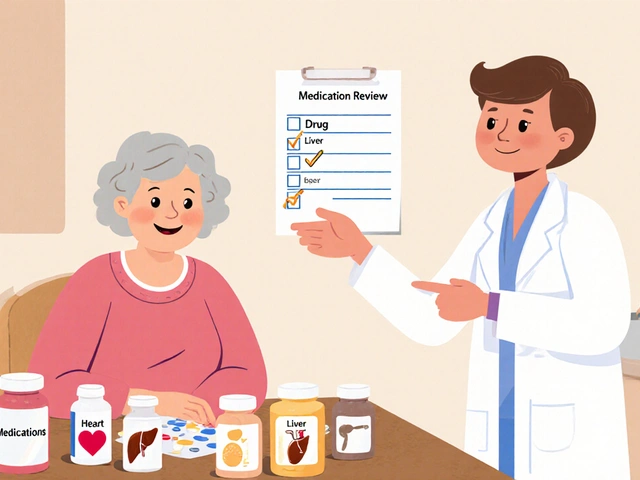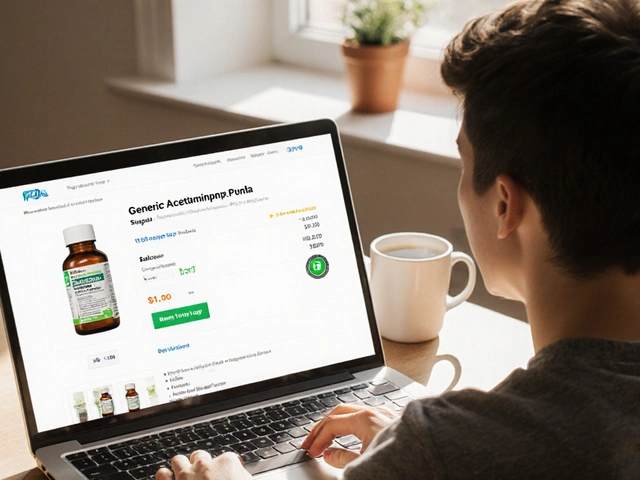COPD is a chronic obstructive pulmonary disease that progressively limits airflow, causing breathlessness, cough, and frequent exacerbations. It affects roughly 16 million adults in the United States and an increasing number of Australians, especially those over 55 who have a history of smoking. Caring for someone with COPD isn’t just about medical appointments; it’s a daily partnership that blends empathy, practical tweaks, and solid information. Below you’ll find a step‑by‑step roadmap that answers the most common concerns families face.
Understanding the Disease Landscape
Before you can support effectively, you need a clear picture of what COPD does to the lungs. The disease destroys the tiny air‑sacs (alveoli) and narrows the bronchi, making it harder for oxygen to reach the bloodstream. This loss of lung function is measured by spirometry, a simple breathing test that records the volume of air expelled in one second (FEV1). A lower FEV1 score signals more severe obstruction.
Two hallmarks often confuse newcomers:
- Dyspnea - the sensation of not getting enough air, which can flare up with minimal exertion.
- Exacerbation - an acute worsening that may require steroids, antibiotics, or even hospital care.
Recognising these signs early can prevent a crisis and make your loved one feel safer.
Recognising Daily Challenges
People with COPD experience a range of everyday hurdles:
- Shortness of breath while climbing stairs or even walking to the mailbox.
- Fatigue caused by the extra effort the body spends on breathing.
- Medication schedules that include multiple inhalers, nebulisers, and oral drugs.
- Social isolation because activities feel exhausting.
Each of these challenges opens a window for supportive action.
Practical Support Strategies
Below are tangible ways you can make life easier, each linked to a specific need.
- Organise Medication - Use a weekly pill box and label each inhaler by type (e.g., bronchodilator for quick relief, steroid inhaler for maintenance). A simple checklist on the fridge can prevent missed doses.
- Introduce Breathing Aids - A portable oxygen concentrator can be life‑changing during a flare. Even a handheld fan can help a person feel cooler and reduce the work of breathing.
- Adapt the Home - Place frequently used items on lower shelves, install grab bars in the bathroom, and keep pathways clear of clutter. These tweaks cut down on trips that trigger breathlessness.
- Encourage Movement - Gentle walking, seated marching, or tai‑chi improve lung capacity over time. Pair the activity with a loved‑one’s favourite music to keep morale high.
- Mind the Diet - Smaller, more frequent meals are easier to digest and reduce pressure on the diaphragm. Foods rich in antioxidants (berries, leafy greens) support overall lung health.
Remember, consistency beats intensity. Small, repeated gestures build confidence.
Managing Exacerbations
An exacerbation can strike without warning. Your role is to spot early signs and act fast.
- Watch for warning signals: increased cough, change in sputum colour, or sudden loss of breath.
- Follow the action plan: Most pulmonologists provide a written plan that outlines when to use rescue inhalers, start oral steroids, or call emergency services.
- Stay hydrated: Fluids thin mucus, making it easier to clear.
- Contact the care team: A quick phone call can prevent an ER visit. Keep a list of phone numbers (primary doctor, local respiratory therapist) on the fridge.
Having a prepared bag with inhalers, a spare oxygen mask, and a copy of the action plan can save precious minutes.

Facilitating Pulmonary Rehabilitation
Pulmonary rehabilitation is a structured program that blends exercise, education, and counseling. Studies from the National Health & Medical Research Council show that participants improve their six‑minute walk distance by up to 50 metres and report fewer hospitalisations.
How you can help:
- Schedule rides to the rehab centre and accompany your loved one for the first few sessions.
- Track progress using a simple logbook - note distance walked, level of breathlessness, and mood.
- Celebrate milestones (e.g., “You walked 300m today!”) to keep motivation high.
Creating a Healthy Environment
External factors can aggravate COPD. Address them proactively.
| Trigger | Impact on COPD | Mitigation |
|---|---|---|
| Air pollution | Increases airway inflammation | Use HEPA filters, avoid high‑traffic routes |
| Secondhand smoke | Exacerbates breathing difficulty | Establish a smoke‑free home |
| Cold air | Causes bronchoconstriction | Wear a scarf over the mouth, use humidifiers |
| Dust mites | Triggers cough | Wash bedding weekly in hot water |
Cleaning schedules, air purifiers, and keeping windows closed on windy days are simple yet effective steps.
Communicating with Health Professionals
Doctors appreciate concise, organized updates. Prepare a one‑page summary before appointments that includes:
- Current symptoms and any recent changes.
- Medication adherence (including inhaler technique).
- Results of recent spirometry or pulse‑ox readings.
- Questions about vaccination (flu, pneumonia) or new therapies.
Being the liaison reduces repeat questioning and frees up more time for the clinician to focus on treatment adjustments.
Related Concepts and Next Steps
Understanding COPD opens doors to broader health topics. You might explore:
- Smoking cessation programs - the single most effective way to slow disease progression.
- Vaccination strategies - flu and pneumococcal shots dramatically cut infection‑related exacerbations.
- Telehealth monitoring - wearable pulse‑ox devices can alert caregivers to early desaturation.
Each of these topics deepens the support network and equips families with a stronger toolkit.

Frequently Asked Questions
What is the difference between COPD and asthma?
COPD is a progressive, mostly irreversible blockage of airflow caused by long‑term exposure to irritants like cigarette smoke. Asthma typically involves reversible airway narrowing triggered by allergens or exercise. While both cause wheezing and shortness of breath, COPD patients usually have a lower FEV1 that does not fully return to normal after bronchodilator use.
How often should spirometry be performed?
Guidelines from the Global Initiative for Chronic Obstructive Lung Disease (GOLD) recommend a baseline test at diagnosis, then annually if the disease is stable. More frequent testing (every 6months) may be warranted after a severe exacerbation or when medication changes occur.
Can oxygen therapy be used at home?
Yes. Home oxygen is prescribed when resting oxygen saturation consistently falls below 88%. Portable concentrators allow patients to stay mobile, and proper humidification prevents airway dryness. Insurance typically covers the equipment if a physician’s order is provided.
What are the signs of an impending COPD flare‑up?
Key warning signs include a sudden increase in cough frequency, a change in sputum colour (especially becoming yellow or green), heightened shortness of breath at rest, and low‑grade fever. Spotting these early and acting on a written action plan can keep the flare mild.
How can I help my loved one remember to use inhalers correctly?
Create a visual schedule near the inhalers, use a timer app that sends reminders, and practice the technique together weekly. Checking the inhaler’s mouthpiece for residue also ensures it’s being used properly.
Is pulmonary rehabilitation worth the time and effort?
Research shows participants improve exercise tolerance, experience fewer hospitalisations, and report better quality of life. Even a once‑weekly session combined with home‑based breathing exercises yields measurable benefits.







Comments(10)